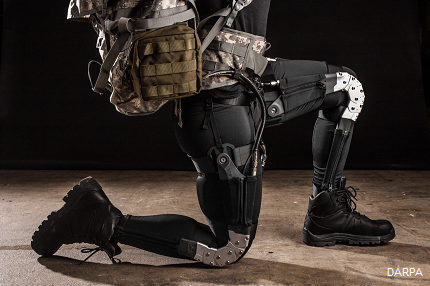Special Forces 'Iron Man' suit prototypes arrive in June
Integrated armor system will provide special operators ballistic and fire protection.
Futuristic suits like those seen in the Marvel comics may not be as far off as they seem, as the military continues to push for the development of an “Iron Man suit” that provides full body armor protection and enhanced capabilities.
The primary goal of the Tactical Assault Light Operator Suit, or TALOS, is to provide Special Operations Forces light and efficient ballistic protection and fire resistance. And the military will get its first peek at them soon.
Three unpowered prototype suits are being assembled and will be delivered by June, Adm. Michael McRaven, leader of Special Operations Command (SOCOM), said at the National Defense Industrial Association’s Special Operations/Low Intensity conference, as reported by Breaking Defense. The first fully operational suit is expected to be completed by August 2018.
The usual route to developing the technology would be to pick a prime contractor that would then come up with a solution, but McRaven has taken an unorthodox approach to the multisystem suit — bringing in dozens of universities, the Federally Funded Research and Development Centers, national laboratories such as Los Alamos, Sandia, and Lawrence Livermore, the Defense Advanced Research Projects Agency, and any private company that can contribute.

DARPA's Warrior Web program is developing technology similar to what TALOS could have.
In total, some 10 national laboratories, 13 universities, 16 government agencies, and 56 corporations are working on the program, reports Defense Tech.
"In this case, the government will be the lead integrator and we'll look to work with traditional or non-traditional partners in industry and academia who are innovative," McRaven said late last year. "We'll leave no stone unturned."
Although TALOS’ full capabilities in the future are unclear, the suit is envisioned to have embedded computers and antennas, increasing information sharing and situational awareness. Additionally, integrated heaters and coolers will maintain body temperature, monitored by sensors capable of detecting skin temperature, heart rate, body position and hydration levels. The suit may even be capable of administering oxygen or hemorrhage controls when the user is injured, according to Armed With Science.
The weight of these systems would be offset by a mechanical exoskeleton that will supplement muscle movements. (And despite being dubbed the Iron Man suit, TALOS will not provide flight capabilities to users.)
“The intent is to have this fully integrated system so you can provide the most capability at the lowest impact to the soldier,” Michael Fieldson, TALOS project manager said. “We think there is some efficiency to be gained if all the equipment is fully integrated as opposed to different components that are simply assembled on the human.”
Supplying power through batteries is the suit’s greatest challenge, and the Pentagon may be willing to pay good money for solutions. McRaven has reportedly spoken to Frank Kendall, undersecretary of Defense for Acquisition, Technology and Logistics, about the possibility offering a cash prize to a person or company that makes major contribution to the suit.
With the delivery of the three prototypes in June, McRaven will soon be able to see the early results of his efforts in fostering private- and public-sector cooperation.